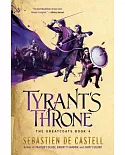This enlightening, entertaining, and intriguing novel begins as a story within a story--or a story within a trunk. A Frenchman--our narrator, presumably the author Michel Jouvet, or a literary
version of himself--buys an antique chest with brass fittings, labeled with the initials HLS and a partially worn away date, "178-." Happy to have such a handsome piece for his hallway, the
narrator is surprised to find within it bundles of ancient papers tied with string. He has discovered the dream journals, experiments, and correspondence of eighteenth-century amateur scientist
Hugues la Sceve. With Jouvet, a recognized authority on sleep and dream research, as our guide, we follow la Sceve's quest to unlock the mystery of dreams.
In his chateau and elsewhere, la Sceve undertakes a series of complex and often comic experiments: he records his own dreams and speculates on their relation to waking life; he studies sleeping
cats, rabbits, and other animals (and observes rapid eye movement almost two centuries before modern science discovers it); he records the sleep and dream experiences of a Swiss soldier and a
pair of Siamese twins. And, because sleep and dreams are often in close proximity to the erotic, he considers the relation of dreaming and sexual activity, heroically undertaking first-hand
research with various women (with the notable exception of his wife).
La Sceve's fantastic experiments and discoveries have a solid scientific basis: Jouvet has transposed some of his own cutting-edge research to the context of the eighteenth century--when
scientific knowledge was more limited, but the joy of scientific study was more widespread. La Sceve's experiments are a testament to the power of scientific observation. The tale that Jouvet
discovered buried in the old chest could have been true.





















